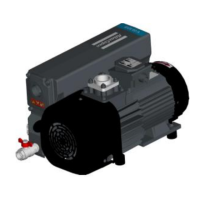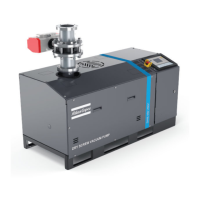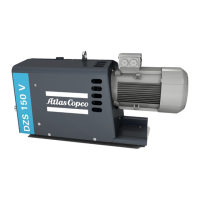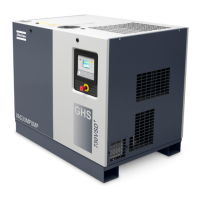24 LRP200000228 Issue A
1. Refer to Figure 1, detail A, B or C. Open the sealing liquid supply valve (10) and the priming/drain valve
(1).
2. Wait until liquid flows from the priming/drain valve (1). The pump is now primed.
3. Close sealing liquid supply valve (10) and then close the priming/drain valve (1).
4. Ensure that all isolation-valves (if fitted) in the process outlet pipeline are open.
5. Ensure that the flow regulating valve (6) is closed.
6. Start the pump.
7. Open any isolation-valves (if fitted) in the process inlet pipelines.
But alternatively, a compound pressure gauge can be installed. In this case, monitor the pressure and
adjust the sealing liquid flow regulating valve (6) until the compound pressure gauge reads approximately -
0.6 to 0.0 barg, depending on pump inlet pressure. The optimum setting occurs when the target pressure is
achieved and the pump is operating correctly, with minimum sealing liquid flow.
4.3 Cavitation and fluid hammer
Under cavitation conditions, the pump will be unusually noisy during operation. Cavitation conditions occur
when the process inlet pressure is close to the vapour pressure of the sealing liquid (see Section 2.6), and
can result from:
• Operation of the pump with an insufficient non-condensable gas load. (For example, operation of a
pump which is over-sized for the application, or operation of the pump when an isolation valve in
the process inlet pipeline is closed).
• Operation of the pump with insufficient sealing liquid in the pump.
• Operation of the pump with the sealing liquid supply temperature too high.
However, the pump may also be unusually noisy during operation due to fluid hammer. Fluid hammer is a
pressure surge or wave resulting when a fluid in motion is forced to stop or change direction suddenly. This
can occur when the flow rate of sealing liquid into the pump is too high.
Refer to Figure 1. If the pump is unusually noisy during operation, slowly close the sealing liquid supply flow
regulating valve (6):
• If the pump quietens down, the noise was due to fluid hammer. You can now continue to operate
the pump as normal.
• If the pump continues to operate noisily, or if the noise level increases, the pump is operating under
cavitation conditions:
Immediately shut down the pump (refer to Section 4.4). Do not continue to operate the pump, or it
may be severely damaged.
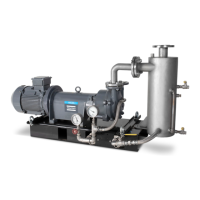
